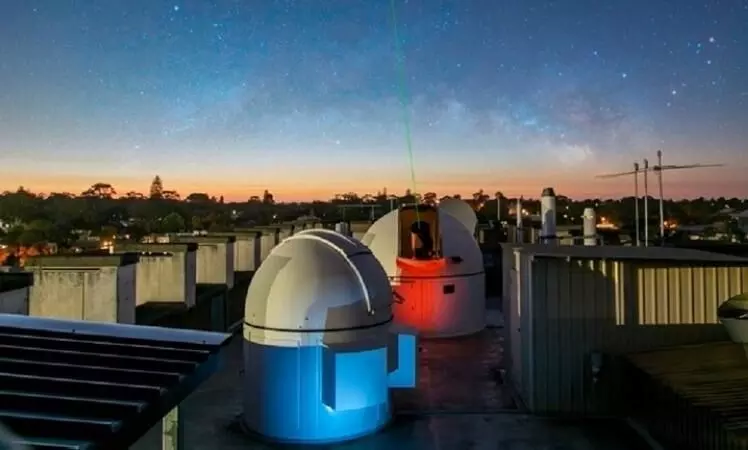
New laser system to provide a more stable connection to space devices
text_fieldsUWA's rooftop observatory
Source: ICRAR
Scientists have created a trailblazing new laser space device communication system which can cut through the atmosphere. This technology will help study the Earth from orbit as well as the characteristics of space and time.
Scientists from the International Centre for Radio Astronomy Research (ICRAR) and the University of Western Australia (UWA) have set a world record for the most stable transmission through phase stabilization technology with automatic self-reliant optical terminals.
The icebreaking technology will also create the most precise technique for comparing the flow of time between two separate locations by transmitting a laser signal into space.
While the team was measuring the returning signal, they came across slight time variations termed as phase delays. Here, the phase stabilization technique computes the phase changes caused by the atmospheric turbulence and immediately changes the phase of the transmitted signal in the opposite way. Through that, both phase changes will get annulled when the signal is received.
"The active terminal essentially uses a small four-pixel camera, which measures the sideways movement of the received beam," said Dix-Matthews, lead author and an electrical engineer of ICRAR to ScienceAlert. "This position measurement is then used to actively control a steerable mirror that keeps the received beam centred and removes the sideways movement caused by the atmosphere."
Satellite communications are usually conducted with the help of radio waves. However, the number of satellites is increasing and simultaneously, the competition for radiofrequency frequencies. As the information propagated by these satellites is necessary, laser communication will be the best solution. A laser is more bandwidth-friendly and also more secure than classic radio for data delivery. NASA is also expecting to make a difference by transmitting more science data using infrared lasers from space which will be launched early 2021.
The results were published in the journal Nature Communications.





